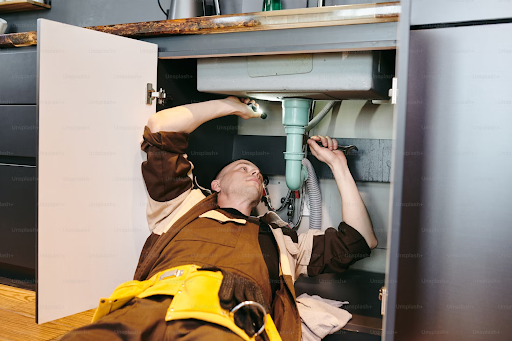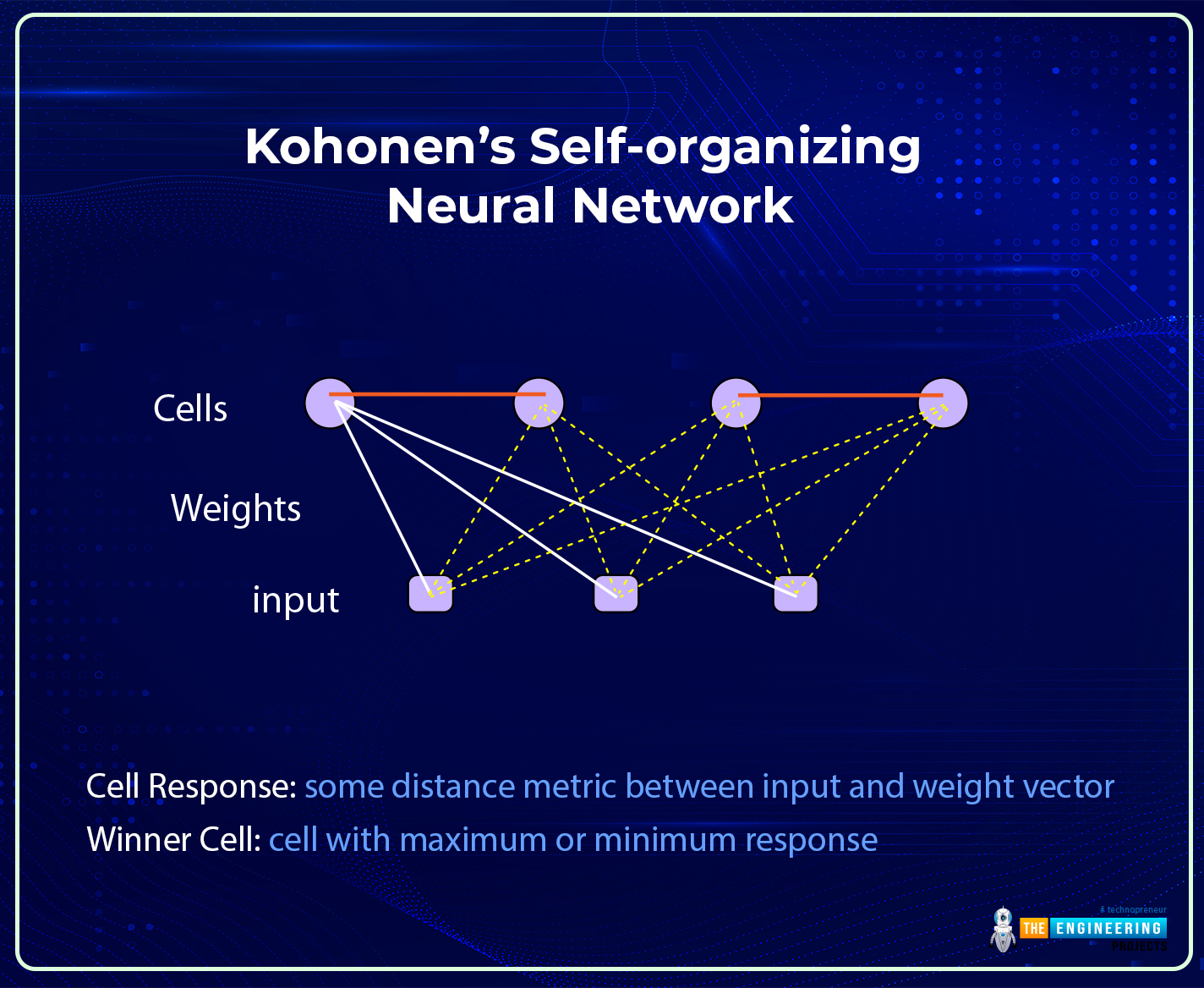

Kohonen’s Self-Organizing Neural Network


Hi there! I hope you are having a great day. The success of the field of deep learning is due to its complex and advanced neural networks. These networks can be broadly divided into traditional and modern neural networks. We have seen the details of traditional neural networks, and in the previous session, the basic introduction of modern neural networks and the details of their features were discussed. Today, we will talk about one of the most famous modern neural networks, the Kohonen Self-Organized Neural Network.
Modern neural networks are more organized and developed than traditional neural networks, but that does not make traditional neural networks less efficient than modern ones. All the networks are introduced for specific tasks, and this is one of the main reasons behind the evolution of deep learning in every field. The details of Kohonen's Self-organizing Neural network will prove it, so let’s start learning.

Kohonen’s Self-organizing Neural Network
The Kohonen Self-organizing network is also known as the self-organizing feature map (SOFM), and It was developed by Teuvo Kohonen in the 1980s. It is a powerful type of unsupervised learning, the main purpose of which is to map the high dimensional input data even at the lower dimensional grid. It can be used on two or more dimensional data where the neurons are connected and each layer is weighted according to the calculations.
Throughout the data dimensions, the topological properties of the data saved in them remain preserved. During the training process, the self-organizing map learns to organize itself with similar data points and creates a connection with the nearby neurons of the grid.
The training process for SOMs uses competitive learning methods. Think of the scenario where, when new data is added to the network, a quick calculation is made to find the neuron with the same data weight. The most suitable neuron is called the best matching unit (BMU), and adding the new data stimulates it. As a result of this addition, the weights of BMU and their neighbors are updated according to the data. It makes all the neurons similar to each other, and as a result, the network becomes better with time. Here are the details of the key features that we have just discussed:
Topology Preservation
Topology preservation is the feature of the algorithm that maintains the spatial relationship and the structure of the data that it uses. This all happens when the data is mapped on the lower dimensional grid.
The basic objective of topology preservation is to maintain the structure of the map. This feature preserves the data when it is mapped from higher to lower dimensional space.
Grid-like Structure
This is the basic feature of the Kohonen neural network. The data is arranged in the form of a grid of nodes and neurons. Each of these represents a specific region or cluster of the input data. It becomes easy to maintain the structure of neurons with similar sizes and properties.
Competitive Learning
This is another way to organize the data in the SOM, and here, the BMU plays a vital role. This feature is responsible for checking two important parameters throughout the processing:
Learning rate
Neighbourhood operation
Here, the learning rate defines the magnitude of the update rate of neurons, and neighborhood operation means the measure of the change in the properties of neighboring neurons when new data is introduced in the model.
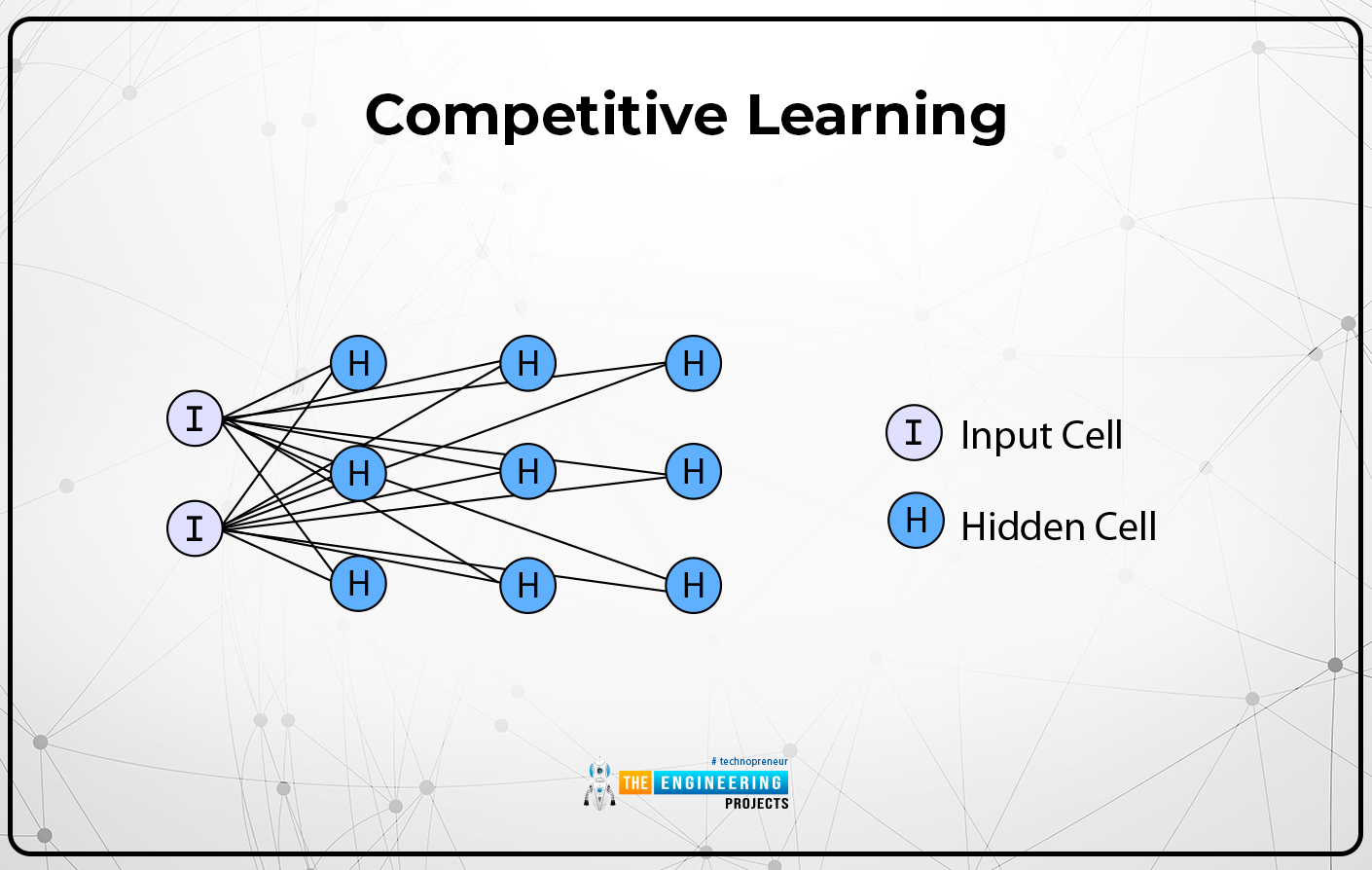
Competitive learning helps the network in processes like clustering and visualization. The network autonomously discovers the inherited structure without any need for supervision. It is an iterative process that helps the network grow and learn at a rapid rate.
Advantages of Kohonen's Self-organizing Neural Network
Understanding the advantages of using Kohonen’s self-organizing network will clarify the significance of this network. Here are some important points about it:
- This network is useful to reduce the complexity of data. It converts the high-dimensional data into lower dimensions; therefore, the data becomes simple and easily understandable. The interpretation of complex datasets becomes easier, and better results are seen.
- The dimensions are decreased in this process, but the information is not changed; therefore, feature extraction at lower dimensions becomes easy without any data loss.
- This is a good option for the data clustering process because it divides the data into different groups. Hence, it becomes easy to identify the patterns and trends of the data.
- This technique has been used in vector quantization and image compression.
- The power of heavy identification of patterns helps the medical officers identify and diagnose the disease.
Industrial Use of Kohonen’s SOM Neural Network
Once you have understood the applications, you are ready to learn about the industrial uses of Kohonen’s self-organizing neural network. The workings of SOM are so organized and automatic that many industries rely on them for the most sensitive calculations, and their results affect the overall performance of that industry. Here are some examples:
Data Mining Companies
The analysis of complex datasets by data mining companies is an important task. Many companies use SOM for such processes where the patterns have to be observed carefully to provide detailed analyses. Different techniques are useful in this regard, but SOM is used here because of the organized pattern and competitive learning.
Some of these companies provide tools for data exploration to their clients. Some provide customer segmentation and anomaly detection. All of these require the use of powerful neural networks, and they use SOM along with other networks for this.
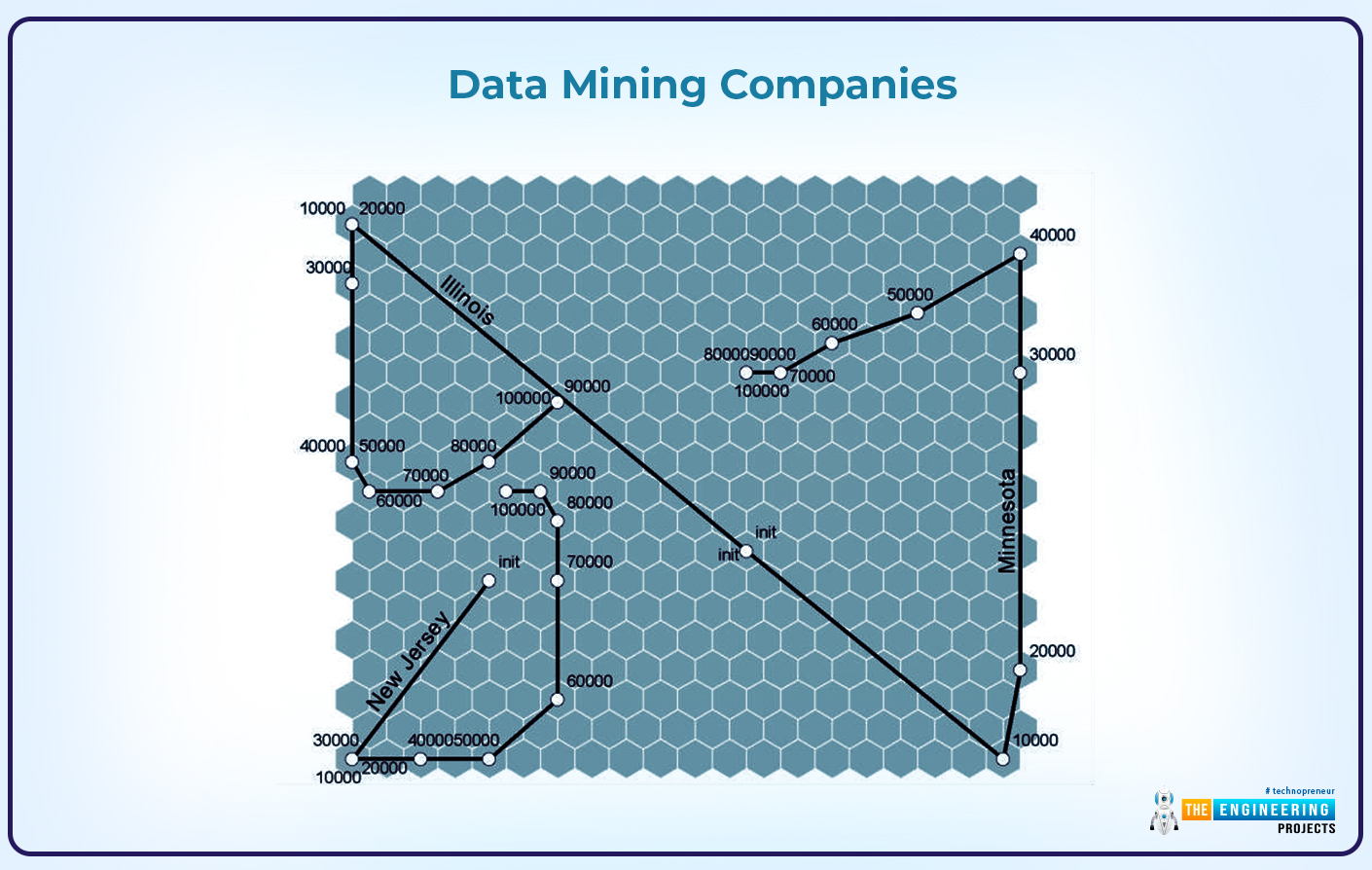
Banking and Finance
In industries where financial records are imported, this technique detects fraud. For instance, it identifies the patterns of stock marketing and helps detect any abnormal bhavior. In addition to this, processes like risk assessment and credit storage are improved with the help of SOM. This is done in the institutes that are working globally, and a large community has to be handled by the institutes.
Security with SOM
The advancement in technology has provided multiple advantages, but it has also led to increased security risks. The SOM is helpful in dealing with such issues. Here are some points to justify how SOM is helpful in different types of technical crimes:
- SOM creates the network security visualization of network security data visualization. Identification and analysis become easy because the detailed patterns of data can be seen with the help of SOM. In some systems, SOM automatically highlights suspicious operations that are not possible with ordinary techniques.
- SOM classifies the software and files according to their features and can identify malware and unwanted pieces of software among them.
- The ability of SOM to identify spam or fraudulent emails is helpful in filtering harmful communication.
Transportation and SOM
As we have said earlier, SOM is useful not only in technical and complex fields but also in non-technical fields. The transportation system seems simple, but it has some very important points that can be made simple and more effective using techniques such as SOM. Here are some points to notice:- The traffic flow has to be organized and planned to save lives and the system. The use of SOM in different ways allows the traffic controllers to maintain traffic flow at every level. This is particularly useful for developed countries.
- The overpopulation has led to issues like complex traffic patterns. Som can be useful for making routing and optimization easy by observing the patterns according to time and place.
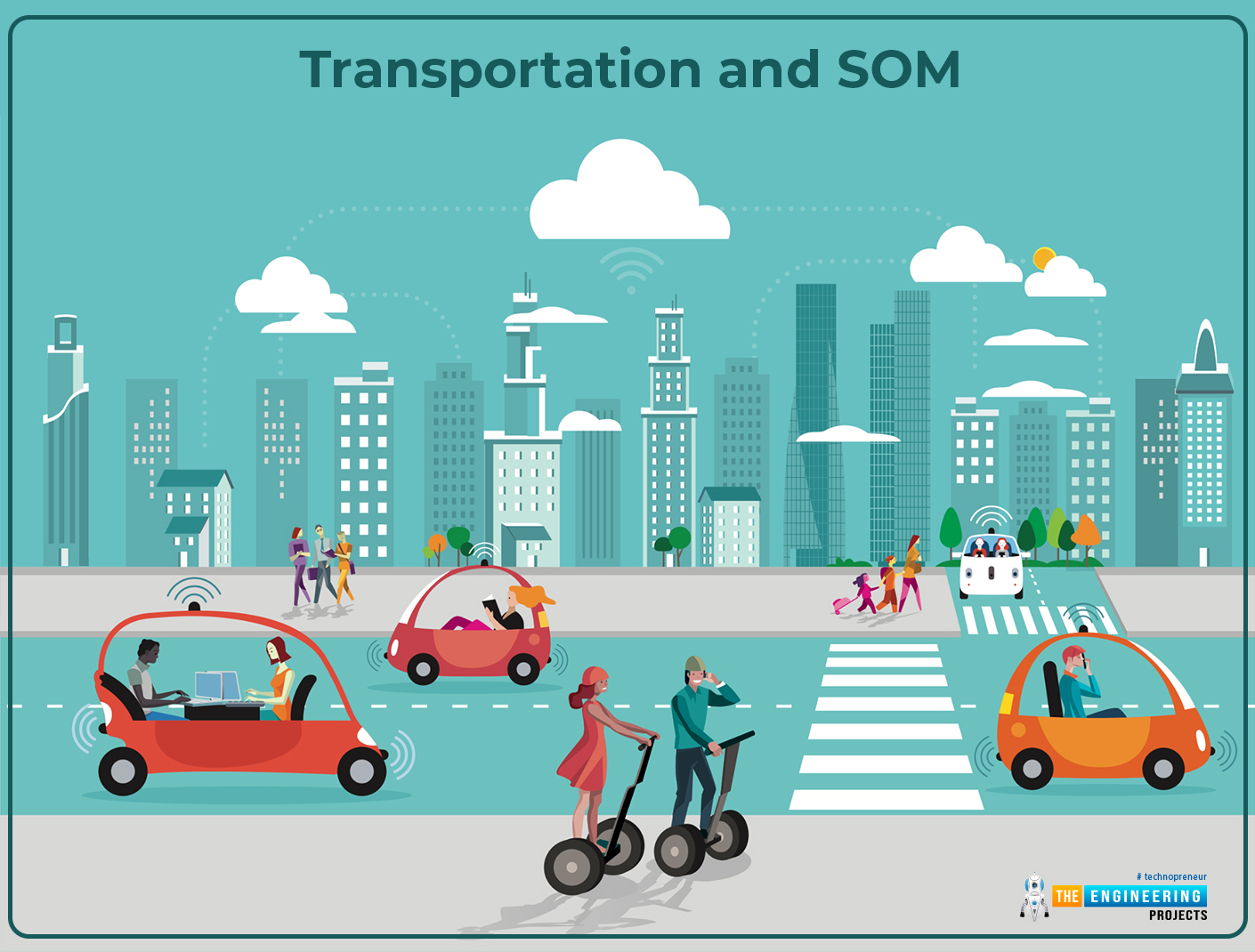
- SOM is helpful to observe the behavior of people, and in the case of transportation, the behavior of the driver plays a crucial role. Hence, this neural network is saving lives.
Hence, today we have seen the details of Kohonen’s self-organizing neural network. It is a type of modern neural network that is helping people in different applications in real life. We have seen the features and workings of this neural network, and to understand its importance, we have seen its applications and advantages at different levels. I hope it was helpful to you, and if you want to know more types of modern neural networks, then we will discuss these in the coming sessions. Happy learning.








 1 user
1 user






 Continue Wishlist
Continue Wishlist





 Getting Started Guide
Getting Started Guide
 Help Center
Help Center
 Contact us
Contact us
 Doist Blog
Doist Blog
 Privacy
Privacy
 Security
Security
 Terms of Service
Terms of Service
 What's new: Channel Descriptions
What's new: Channel Descriptions





 Deep Learning
Deep Learning ayeshayounas
ayeshayounas 0 Comments
0 Comments








 2.3k
2.3k
 953
953
 921
921
 2.1K
2.1K
 Kohonen’s Self organizing Neural Network
Kohonen neurla network
Kohonen’s Neural Network
Kohonen’s maps
Kohonen’s Self organizing Neural Network
Kohonen neurla network
Kohonen’s Neural Network
Kohonen’s maps
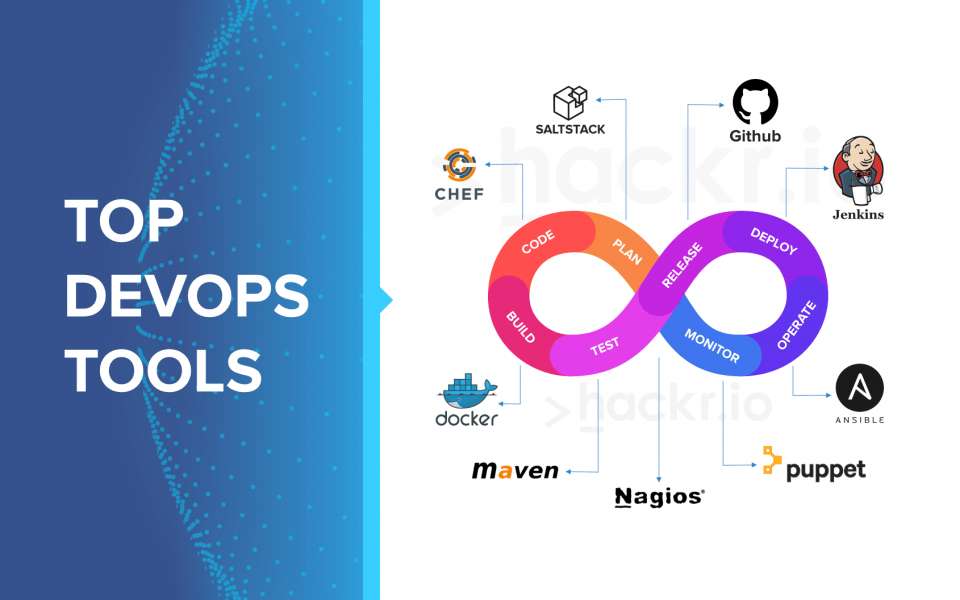
 Friday, September 22, 2023
Friday, September 22, 2023